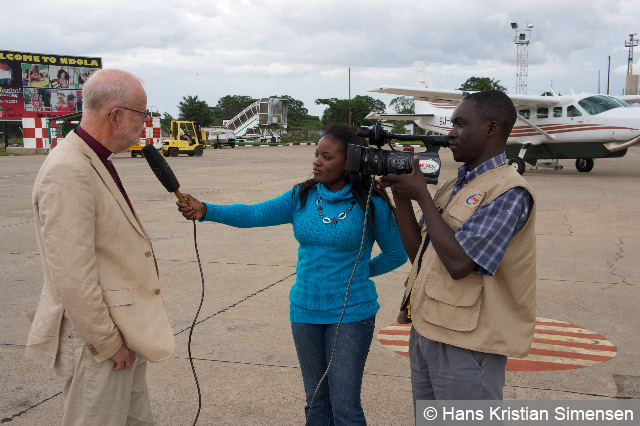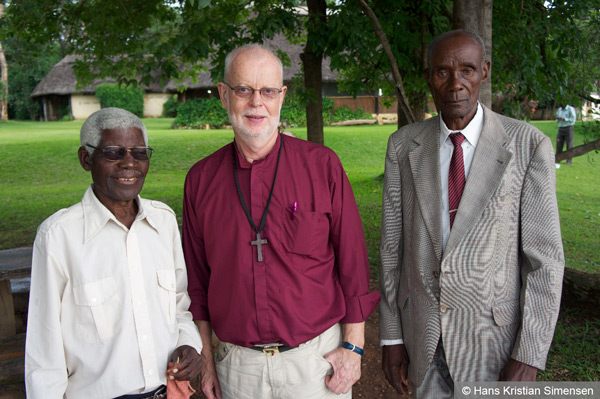This article originally appeared in Swedish newspaper Svenska Daglabet, with whose kind permission it is reproduced in English here.

I am convinced! Dag Hammarskjöld did not die in an air accident fifty-one years ago. He was murdered! The rumours have been there from the beginning, but have been dismissed as mere conspiracy theories of the kind associated with accidents involving important persons.
Last December I spent a week in Zambia, invited to lecture on Dag Hammarskjöld in connection with the fifty-year commemoration of his death. I was introduced to people who witnessed what took place on the night of 17 September 1961 in Ndola. One of them was Mr. Johnny Ngongo, working as a charcoal burner close to the crash site; he told me that he and a friend saw a burning plane slant heavily before hitting the ground, and with one of the wings on fire. He believed that the plane was burning because it had been shot at. The second witness, Mr. Safeli Mulenga, saw the plane catch fire in mid-air while circling over Ndola for a third time. Mme. Kankasa, a third witness, told me that her late husband had called her out of their house after seeing a big plane being shot at. She then saw two further planes returning to Ndola airport. The Kankasas lived at that time between the airport and the crash site. All the witnesses said the shooting-down took place before midnight.

Personally, I have never believed in the theory that it was an ordinary air accident caused by pilot error. Too many stakeholders in the ongoing Congo crises hated Hammarskjöld and wanted him dead. It was the time of the Cold War, and the American CIA and the British MI6, along with their counterparts in the Soviet Union, had a powerful presence. It was also the era of decolonization: former colonies in Africa gained independence while Eastern and Western powers were seeking new ways of influencing the newborn African states. It was also about the Belgian, French and British struggle to maintain economic influence, with the help of mercenaries, over the rich natural resources in former colonies. Last, but not least, it was about the racist white minority in the Federation of Rhodesia and Nyasaland who tried to create an apartheid state similar to the one in South Africa. It was this regime that controlled the Ndola airport and wanted to see an independent Katanga – the main issue in the Congo crisis, only 10km away from its border. It was the work of those who hated Hammarskjöld most, for his support for African independence and his resistance against sustained European economic power in Africa.
I did not go to Zambia unprepared. Many archives have now been opened, and the British researcher Dr. Susan Williams is the first to write about this new material. Last autumn her book Who Killed Hammarskjöld? The UN, the Cold War and White Supremacy in Africa was released. Williams, who grew up in Northern Rhodesia/Zambia and so has personal experience of the atmosphere in the former colony, has boldly entitled her work in the vein of Ludo de Witte’s The Assassination of Lumumba, published back in 2001. His book made the Belgian Government admit moral responsibility for planning the assassination of the first elected Prime Minister of Congo, but not for his execution. Williams, on her part, is working on a new Hammarskjöld inquiry to find out what part the British Government had in Hammarskjöld’s death.
Dr. Susan Williams’ research has its starting point in Sir Roy Welensky’s archive. He was the last Prime Minister in the Rhodesian Federation, and documents from the period of Hammarskjöld´s death are now available. Among the documents is the material that formed the basis of the Rhodesian Investigation Board in 1962. She found that certain passages were falsifications of what had happened, as well as a ’doctored’ photograph concealing a bullet hole in Hammarskjöld’s head. By controlling the airport, cordoning off the crash site, delaying the ’discovery’ of the crashed plane and so on, they could maintain, arrange and support the theory that has prevailed until now: namely that the crash was caused by pilot error and fatigue. Though the UN Investigation Commission that followed the two Rhodesian reports in 1962 had an ’open’ verdict, opposing conclusions have been swept under the carpet as ’conspiracy theories,’ not least by the Swedish Foreign Ministry.
Where were the witnesses I spoke to in December in the investigations conducted by the Commissions back in 1961-62? Either they did not dare come forward, were accused of having political motives for giving their witness statements or were disregarded because of the climate of the time. Since independence in 1964, they now all have freedom of speech and value as humans, and their statements in Zambia have taken priority over the ’doctored’ evidence from colonial times which concealed self-evident facts: that Hammarskjöld was killed and the world was made to believe in their falsified evidence.
Another book, written by the Swedish authors Rolf Rembe and Anders Hellberg, was published in autumn 2011 – Midnight in the Congo: Dag Hammarskjöld’s Lost Victory (Atlantis). The Swedish writers have been working with previously known material and therefore haven’t reached the same conclusions as Dr. Williams. The strength of their book is, however, their strong criticism of the attitude of the Swedish Foreign Ministry. Why isn’t there a greater interest to clarify once and for all what really took place right outside Ndola on the night of 17 September 1961? The Zambians I spoke to during my visit are surprised by the lack of Swedish interest. Shall we, as Swedes, really allow the Rhodesian apartheid regime to write Swedish history? Is it of no importance to us that the families of the dead pilots have wrongly been carrying the burden of blame? Both books end with demands for a new inquiry. They turn also to the Swedish government, hoping it will awake from its self-chosen acquiescence and push for a new UN inquiry. The UN promised in 1962 to authorize a new commission if fresh facts were put on the table, and that certainly is the case now. The research continues, and in many respects Dr. Williams’ book is already outdated. The Swedish Foreign Ministry can no longer hide behind the idea that the Hammarskjöld family is not interested in a new commission. On the contrary, when I spoke to the late Knut Hammarskjöld, Dag´s nephew, he expressed a strong wish to have the case reopened.
Swedish Foreign Minister Carl Bildt! You were in Ndola on 18 September last year, and you surely heard parts of the witness statements, just as I did. Demand that the UN authorize a new commission and that all the parties that have been involved now put the relevant information on the table!